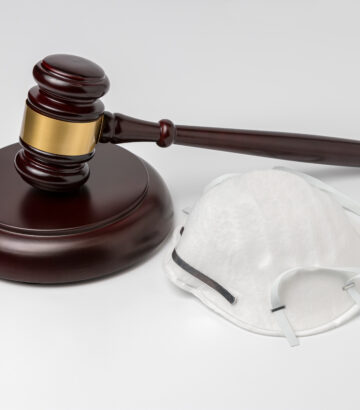Terms of Reference for the Science and Policy Group of the World Health Network
1. Mission
The Science and Policy Group (SPG) is a global multidisciplinary science and other domain expert membership society as an organizational framework for individuals who have the expertise to contribute to, assess, and analyze science and how it applies to societal challenges, including but not limited to pandemics and environmental crises. The members of the SPG participate in teams of the World Health Network, including the Covid Action Group (CAG), other teams of the Science Division, and more generally. The SPG also engages in professional society functions as described below.
2. The SPG, a Scientific Society
The SPG serves as a global scientific society, building its membership and providing opportunities for scientific meetings (virtual), educational programs to teach or learn from, networking for collaboration, publication, professional development, and recognition. In greater detail, the scientific society functions include:
- Conferences and Workshops: opportunities to give and attend presentations and workshops on current research and methodological advances to scientific, professional, and public audiences.
- Education: courses, webinars, and other educational programs for members to teach or learn.
- Networking: building professional relationships to facilitate career development, collaborations for funding and research, and mentorship.
- Publication: opportunities to publish research and review articles in WHN Science Communications.
- Professional development: career guidance, job boards, mentorship programs, leadership training, and other opportunities to enhance skills and for career advancement.
- Professional recognition: membership and awards based upon contributions to science and the advancement of SPG programs and mission.
3. Reporting Structure
The SPG consists of scientists, professionals, and other experts who are interested in participating in the diverse efforts of the WHN. These members participate in SPG teams, and more generally in WHN teams, enabling many of the WHN activities to be informed by scientific and other professional knowledge and capabilities. SPG activities are organized around teams that are integrated into the WHN team structure for project and functional capacities.
The SPG science and policy functions (section 1 above) are under the supervision of the Covid Action Group (CAG) and its Chair and involve the WHN Content Team, WHN Analytics Team, and other WHN Science Division teams. The functions of the SPG (section 2 above) are coordinated by an SPG Executive Leadership Team chaired by an SPG Executive Secretary (ES), reporting to the WHN Steering Group, which will provide support, notably by nominating someone to act as the Executive Secretary (ES) to the SPG. The ES will provide support and resources to the SPG as appropriate. The ES will also communicate the SPG’s advice and recommendations to the WHN’s governing bodies and members and to the public, as appropriate.
The terms of reference of the SPG are established by approval of the WHN Steering Group and the WHN Organizational Structure Team and maintained by the ES in consultation with the SPG Executive Leadership Team and CAG Chair. They are reviewed and updated periodically, as needed. The terms of reference define the purpose, scope, and mandate of the SPG, as well as the roles and responsibilities of the members, the CAG Chair, the Executive Leadership Team, and the ES.
The WHN Steering Group nominates the ES and the members of the SPG Executive Leadership Team. The ES Chair and members of the SPG Executive Leadership Team are appointed for a term of two years, renewable once.
4. Membership
4.1 Selection of Members
Members of the SPG are recruited through open and targeted nomination processes. Members are identified from a broad array of sources, such as scientific and other professional societies, academia, government and non-government agencies, and the public. The nomination process is designed to ensure requisite expertise and experience, and a variety of perspectives, promoting diversity and inclusiveness.
The SPG Executive Leadership Team and the ES review, select and appoint members of the SPG amongst the nominees. The individuals retain their membership, provided that they fulfill their member activities, and are to be evaluated in the first month of every new year by the SPG Executive Leadership Team and the ES.
The members serve in their personal capacity and not as representatives of any organization or interest group. The members are expected to act with integrity, impartiality, and professionalism and to adhere to the WHN’s code of conduct and conflict of interest policy.
4.2 Types of Members
The SPG has two types of members, core and ad hoc members, selected for their scientific, technical, and clinical expertise and knowledge. Core members are permanent members for the duration of their terms. Ad hoc members are invited to serve for a specific topic or group of topics, as needed.
The SPG’s membership as a whole will reflect an appropriate blend of gender and regional representation, covering various areas of expertise, knowledge, and perspectives, such as:
- Biomedical sciences
- Psychosocial sciences
- Physical sciences
- Engineering
- Communications
- Ethics
- Policy
- Law
- Medicine
- Public health
- Epidemiology
- Virology
- Immunology
- Infectious diseases0
- Pharmacy
- Occupational Health and Safety
- Biostatistics
- Bioinformatics
- Ethics
- Communication
- Health Psychology and Behavioural Medicine
- Implementation Science
- Others
4.3 Member Activities
Each member of SPG shall participate in at least one of the following activities each year unless just cause is provided:
- Making a presentation at a professional WHN summit
- Giving a training or pedagogical lecture or workshop
- Participating in training
- Participating in a team of SPG
- Organizing an SPG effort (new or repeating)
- Leading or participating in a team of WHN
- Participating in the expansion of SPG by recruiting other members
- Engaging in relationship building for WHN with other stakeholders
- Engaging in an advisory role for other organizations on behalf of WHN
- Interacting with other WHN teams as a liaison on behalf of SPG
4.4 Nomination Process
The World Health Network (WHN) makes a call for nominations through its various channels, including the Covid Action Group, to fill vacant or upcoming positions in the Science and Policy Group (SPG). The call specifies the purpose, scope, and mandate of the SPG, as well as the expertise and experience needed for the group, such as epidemiology, virology, immunology, etc. The call also outlines the nomination procedures and materials, such as a nomination letter, a curriculum vitae, and a signed Ethics – WHN Code of Conduct declaration form.
Nominations can be submitted by individuals, professional associations, scientific societies, or other organizations within a specified deadline. Nominations are sent to the Executive Secretary of the SPG.
The ES reviews and screens the nominations in consultation with the SPG Executive Leadership Team and members and prepares a shortlist of candidates. The shortlist is based on the criteria for selecting the members, such as scientific qualifications, expertise, experience, diversity, and balance. For greater clarity, it is emphasized that although academic credentials are considered in the nomination process, significant weight is given to the candidate’s societal actions and involvements, as well as their knowledge acquired through practical experience. In other words, academic credentials are but one of several factors weighed when evaluating a candidate.
On a monthly basis, the ES submits the shortlist to the CAG members and solicits their feedback and recommendations. The DG also communicates the shortlist to other relevant stakeholders and audiences, such as governments, international organizations, academia, civil society, and the media, and invites their comments and inputs.
The ES compiles and analyzes the feedback and comments received and prepares a summary report for the final selection of the new members. The ES presents the summary report to the WHN Steering Group for approval.
The ES notifies the SPG Executive Leadership Team of the new appointments and contacts the approved candidates to confirm their interest and availability to serve as a member of the SPG. The ES also informs the unsuccessful candidates and thanks them for their interest and participation. The WHN can announce new appointments to the public through posts on social media or by adding information on the WHN website.
5. Operating Procedures
5.1 Regular Operating Procedures
The operating procedures of the SPG are established by the SPG Executive Leadership Team, with approval from the WHN Steering Group and WHN Organizational Structure Team in consultation with the members of the SPG Executive Leadership Team and the ES. They are reviewed and updated periodically, as needed. The operating procedures define the structure and governance of the SPG, as well as the modalities and frequency of the meetings, communication, decision-making, and reporting.
5.2 Special Procedures
The SPG shall activate autonomous/swift decision-making on a designated domain or topic when any of the following conditions occur:
The normal decision-making process is unavailable due to time constraints or other factors.
An unexpected event or crisis arises that requires immediate action.
5.2.1 Autonomous Decision-Making Process:
A minimum of three SPG members, including at least one representative from the SPG Executive Leadership Team or the ES, shall form an autonomous decision-making group.
During emergencies, these members shall:
- Assess the situation.
- Collaborate to reach a decision.
- Use consensus to determine the course of action.
- Designate a leader if necessary.
The autonomous decision-making group shall:
- Establish rapid communication channels (e.g., secure messaging, emergency hotline).
- Coordinate actions, document autonomous actions (e.g., date, time, and context of the emergency, decisions made and their impact), and share information promptly.
- Notify other SPG members of decisions made with a concise report explaining the decision taken, the rationale behind it, the required follow-up steps, and lessons learned.
The SPG shall periodically review and update these emergency procedures based on feedback and changing circumstances.











